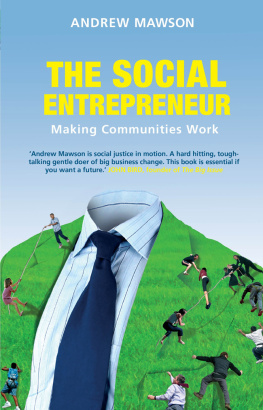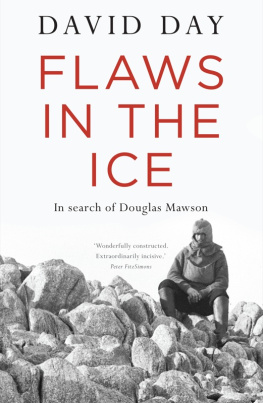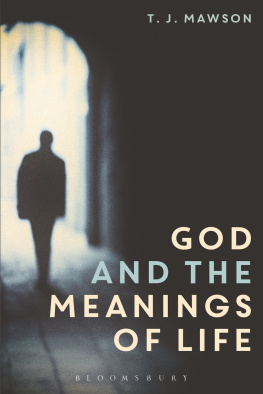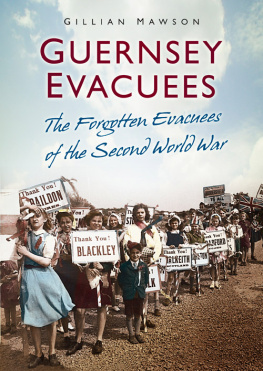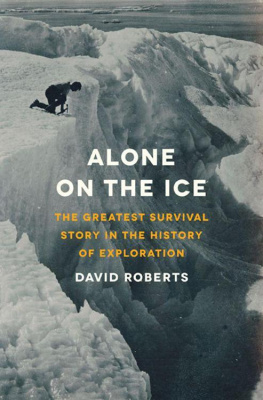the social entrepreneur
Andrew Mawsons career in the social sector has spanned over 20 years. He developed the renowned Bromley-by-Bow Centre in East London and co-founded the Community Action Network in 1998. He is currently involved in developing Londons Water City. He was awarded a Life Peerage in 2007 and in the same year was named in the Evening Standard as one of Londons most influential people.

First published in trade paperback in Great Britain in 2008 by
Atlantic Books, an imprint of Grove/Atlantic Ltd.
Copyright Andrew Mawson 2008
The moral right of Andrew Mawson to be identified as the author of this work has been asserted in accordance with the Copyright, Designs and Patents Acts of 1988.
Map illustration copyright Mark Rolfe Technical Art 2008
The moral right of Mark Rolfe to be identified as the author of this work has been asserted in accordance with the Copyright, Designs and Patents Acts of 1988.
The author and publisher would like to thank HarperCollins and the Tolkien estate for permission to quote from copyrighted material: Lord of the Rings by J.R.R. Tolkien The trustees of the J.R.R. Tolkien 1967 Settlement 1954, 1966.
All rights reserved. No part of this publication may be reproduced, stored in a retrieval system, or transmitted in any form or by any means, electronic, mechan-ical, photocopying, recording, or otherwise, without the prior permission of both the copyright owner and the above publisher of this book.
Every effort has been made to trace or contact all copyright holders. The publishers will be pleased to make good anyomissions or rectify any mistakes brought to their attention atthe earliest opportunity.
A CIP catalogue record for this book is available from the British Library.
eISBN: 9781782396796
Atlantic Books
Ormond House
2627 Boswell Street
London
WC1N 3JZ
www.atlantic-books.co.uk
For Susan
Our children, Liam, Fern and Angel
And our staff and friends at the Bromley-by-Bow Centre who have shared this journey with us
Contents
List of illustrations
The Road goes ever on and on
Down from the door where it began.
Now far ahead the Road has gone,
And I must follow, if I can,
Pursuing it with eager feet,
Until it joins some larger way,
When many paths and errands meet.
And whither then? I cannot say.
J.R.R. Tolkien
The Lord of the Rings
list of illustrations
Andrew Mawson and family in 1984 (Bromley-by-Bow Centre archive)
The archway before restoration (Bromley-by-Bow Centre archive)
Ethel with donated bus (Bromley-by-Bow Centre archive)
The church hall after conversion to nursery (Ros Smith, Wyatt MacLaren Architects)
Santiago Bell in his workshop with one of his sculptures (Barclays PLC)
The church hall set up for worship (Gordon MacLaren, Wyatt MacLaren LLP)
The other side of Bromley-by-Bow (Bromley-by-Bow Centre archive)
The derelict park before redesign and landscaping (Bromley-by-Bow Centre archive)
Tessa Jowell with Andrew Mawson and the Bromley-by-Bow team at the opening of the medical centre in 1998 (Lorenzo Lees)
View of the park as it is today (Gordon MacLaren, Wyatt MacLaren LLP)
Andrew Mawson with the Prince of Wales in 1995 (Lorenzo Lees)
The architects plans for the centre (Gordon MacLaren, Wyatt MacLaren LLP)
A note from Tony Blair to Andrew Mawson (Author archive)
Andrew Mawson meets Tony Blair in 1995 (Lorenzo Lees)
A mosaic by Sheenagh McKinlay (Gordon MacLaren, Wyatt MacLaren LLP)
The front courtyard as it is today (Gordon MacLaren, Wyatt MacLaren LLP)

foreword
I write this book, deliberately, as a polemic. I argue passionately for a particular entrepreneurial approach to achieving social goals which questions the liberal consensus, and I do so based on my experience of over twenty years working in one of the most historically socially failing parts of the country, Bromley-by-Bow in Londons East End. I pose a direct challenge to the prevailing approaches and attitudes of policy makers, politicians, social commentators, journalists, the civil service and the charitable (or third) sector in order to encourage and open up a debate about how we might finally get to grips with this countrys most deeply entrenched social problems and make real, lasting change for generations to come.
Please note that some names have been changed to protect the identity of certain members of the community in Bromley-by-Bow.
introduction
A s a young man I was bought up on a diet of liberal theological education, the virtues of philanthropy and a healthy suspicion of business. Twenty-four years later the realities of working at the heart of some of Britains poorest estates had turned me into a social entrepreneur, committed to applying business principles to social issues.
The term social entrepreneur first appeared in the UK in an article in the Independent in June 1995 referring to me and my colleague Adele Blakebrough. We were part of the small group of individuals who founded the social entrepreneur movement in the United Kingdom, before we even had a term to describe who we were and what we did. Nowadays, the term social entrepreneur is frequently bandied about and I fear it is in danger of coming to mean different things to different people. I want to shed light on what social entrepreneurship is all about and who social entrepreneurs are to lay out what sets apart this entrepreneurial way of working from what has gone before and show how it challenges many of our current assumptions about the provision of public services within Western democracies. I do not want to develop such a tight definition that all creativity is precluded indeed, creativity lies at the very heart of any definition of the term but I do want to make a clear distinction between the traditional approach of the state and charitable sectors on the one hand and the approach of people with a more entrepreneurial mindset on the other.
I want to show how we might all embrace this new way of working. Because this is a genuine attempt to get to the heart of a serious problem I will have to tell some uncomfortable truths along the way. If human creativity and a commitment to changing the world remains at the core of social entrepreneurship, peoples aspirations for social change can be turned into realistic, practical action on the ground in their neighbourhoods, on their streets. It truly does make a difference.
Social entrepreneurs worth their salt do not follow conventional ways of working. Their view of the world begins with people, passion, experience and story not policy, statistics and theory. One of the methods they use to animate a given environment is to challenge people to metaphorically rearrange the furniture in ways that unsettle, challenge and confront them. I hope that this book will have a similar effect.
In my own work, I have quite consciously gone into failing situations to shake things up. This immediately stands me apart from the crowd and draws attention to my message. In this way I have found that I can quickly draw kindred spirits to my campaign. This approach is far more effective when building a team than placing a

